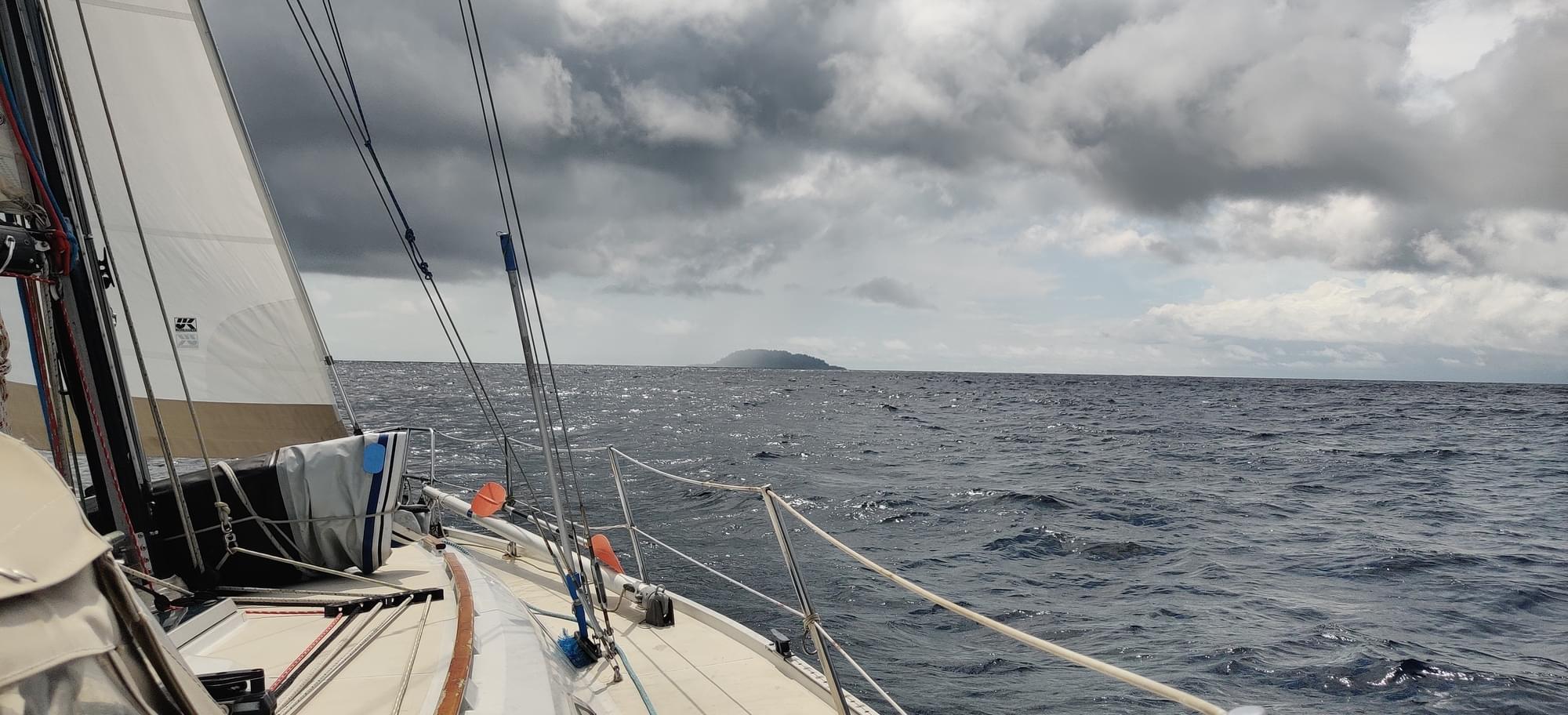We lifted anchor from Islas Secas and we're underway at 7:30. At 8:00, Yalçın had caught a fish, minutes after putting our trailing line out. Our Dutch friend Hank had complained about not getting any fish in the region, we deeply hope the bait we gave him will bring him the kind of luck that we have! The tuna was fileted and the perspective of fresh raw fish for lunch or dinner gave us happiness. A happiness that only a non-working autopilot that you think you fixed a few days earlier can stain. And it did a little, although this time we had the hydrovane up meaning that at, when under sail power, we will not have to hand steer. But for now, there was no wind, and some swell to shake our bellies as we unsuccessfully tried everything in our power to fix the autopilot, and we were constrained to hand steer. An exercise that can be quite tiring, especially if you are not mentally prepare. But what can you do?
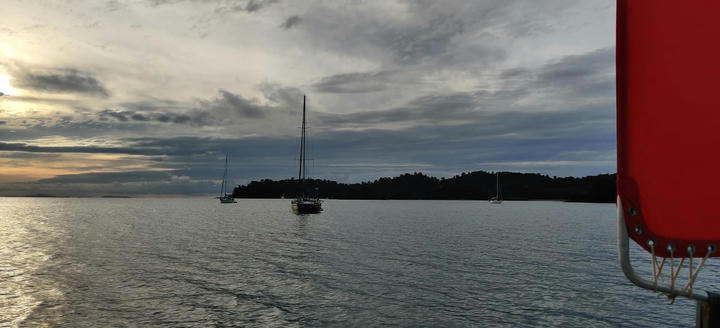
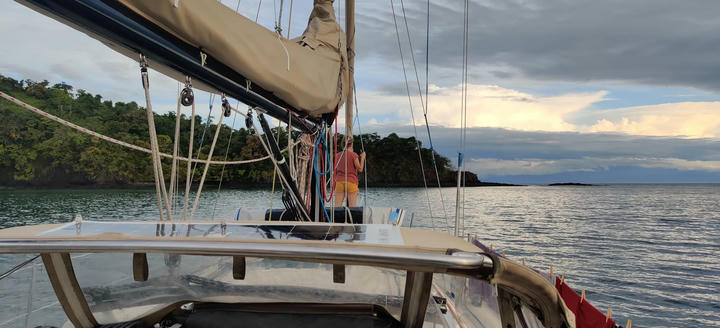
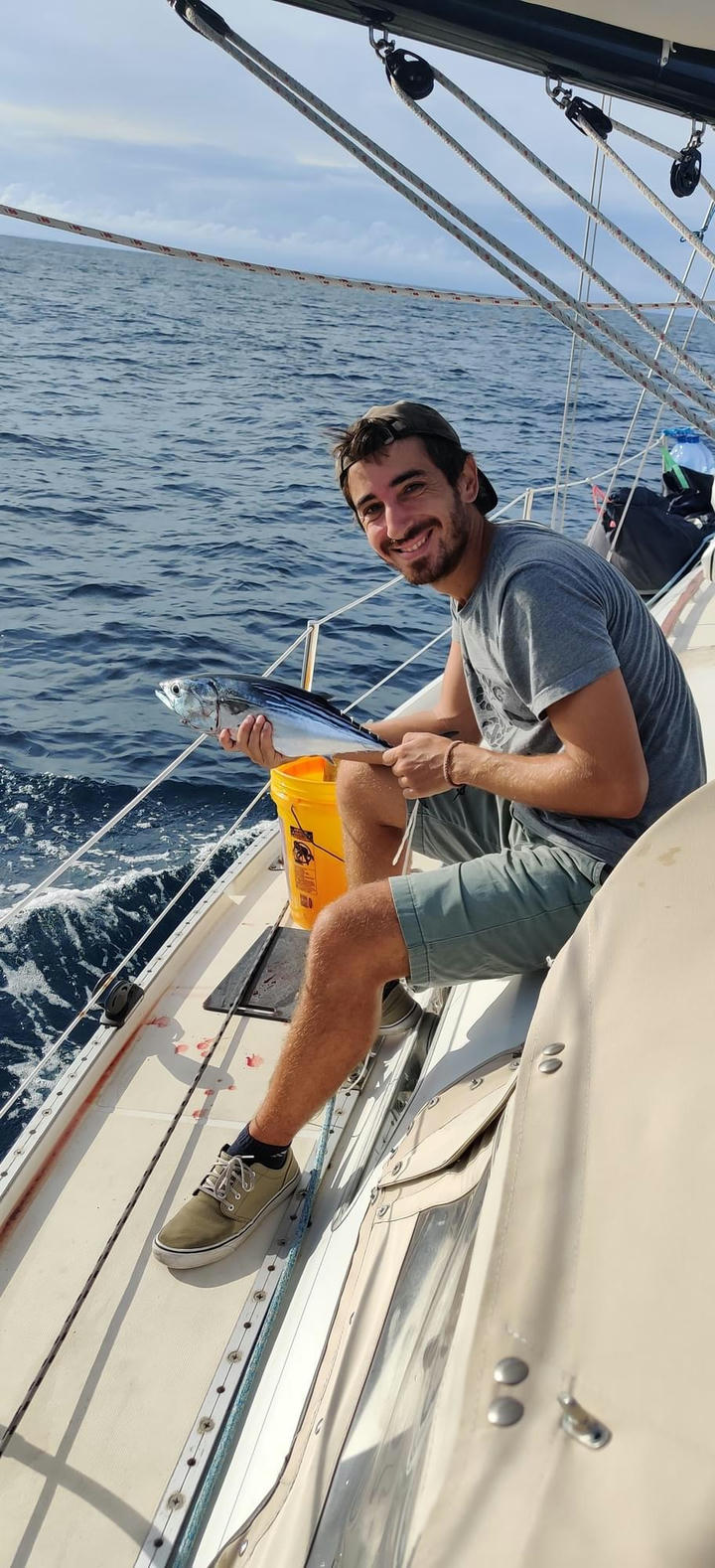
We steered for one hour and the forecasted West wind filled in. It wasn't much at first but enough to release us from our annoying duty and make progress towards our destination, the offshore island Isla Montuosa, recommended by Fatih-abi for its amazingly clear water and prime snorkeling, an opportunity neither Yalçın nor I could miss. The wind force increased to the point we started to worry whether the anchorage would offer enough protection for us to stay overnight. We knew the holding might not be ideal over at the island, with a possible rocky bottom, but we still expected protection from the prevailing South swell. If now wind chops were building from the West, it might not fly.
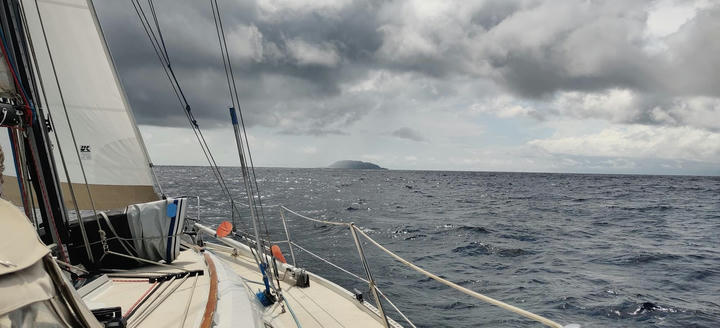
The island grew bigger on the horizon and by the end we found ourselves close-hauled in 15 knots beating up to the island - we could have put money in the bank while motoring but unfortunately we hadn't. We had warmed up cabbage noodle and sausages that I prepared at anchor knowing our bellies were likely not to allow us to cook underway after so many days in the flat waters of Secas. Indeed, the fish degustation had to wait until we dropped the hook.
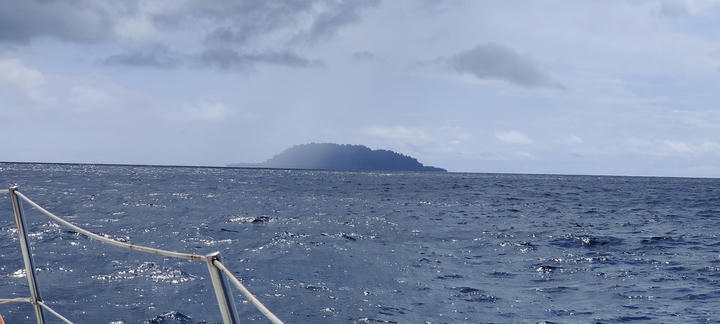
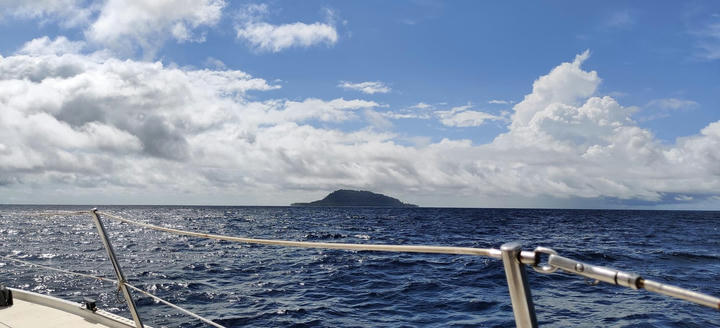
We arrived by Montuosa around 3 in the afternoon and the situation was somewhat worrisome and totally different from our expectations. The wind was stirring the water which, despite looking full of fish, wasn't clear at all and quite unappealing for snorkeling; there were preoccupyingly close breakers on the East and still the chops coming from the West, which prompted us to anchor quite close to the rocky beach or at least closer than the guidebooks and Navionics suggested, hoping for better protection and flatter waters. The place was still rolly and we prepared tuna tostadas outside in the cockpit to mitigate seasickness and take in the natural beauty of this inhabited island. The shades of green of the trees in particular were incredible, accentuated by touches of red. It looked like the color enhanced pictures you find on the internet, with Instagram filters. In our case, it was the opposite, the cameras wouldn't quite capture the multitude of shades of the vivid colors. The fish was delicious in a sauce of yogurt, soy sauce and cucumbers, but the snorkeling still unappealing. We decided to spend the night and hope for more peaceful waters in the morning before taking off for Bahia Arenas, our next destination on the coast.
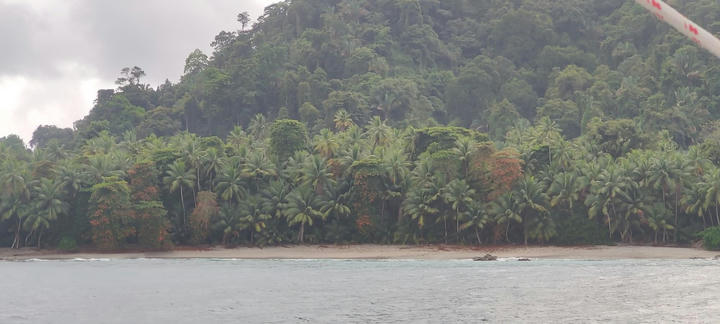
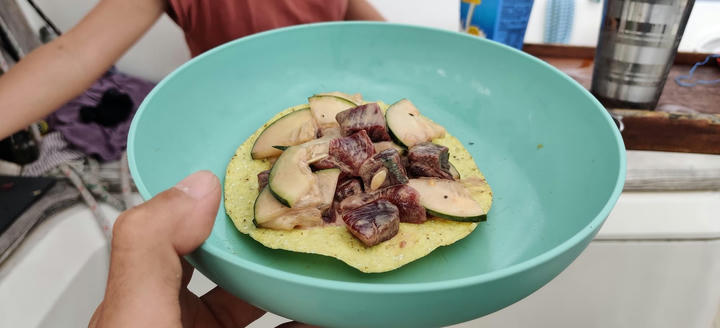
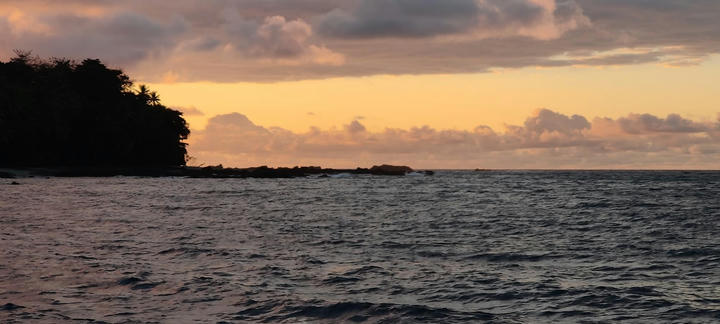
Well, things didn't go according to plans...
With the sun setting and the tide dropping revealing more rocks by the beach, we started worrying about being a little too close to shore for a sleep without nightmares, so we decide to lift up anchor and reset a little further out. A straight forward maneuver in theory which didn't turn out so well in practice. As we hauled the chain up using the electric windlass, a point would come when instead of getting the chain back up and moving the boat forward, the boat would sharply stop as if pulled down and the chain would start flowing back down uncontrollably. This sort of behavior sometimes happens if the clutch that bites the chain on the windlass isn't tight enough, so we tightened it. It fixed the chain going down issue but not our core problem: The anchor was stuck on a rock at the bottom and when we tried again to retrieve it, the windlass simply couldn't pull it, the boat stopped sharply in a bang, the bow violently pulled downwards in the sort of motion that could break things. With the light fading, it was clearly not ideal. After some more unsuccessful trials, Yalçın put his bathing suit and snorkeling mask on and jumped in the water. Taking advantage of the low tide, he dived several times to the bottom with a line to assess the situation and set the anchor and chain free. When he came back, we repeated the lift up operation which went smoother for longer (we retrieved more chain than before) but still jammed. The chain was at the 120 degree angle with the boat, so, from the bow, I suggest that Yalçın uses the prop walk of the engine to back out and pull the anchor in the appropriate direction. Bingo! That lock gave and the chain kept coming up with a clear change in color where it had rubbed on rock - the metal looked like sand blasted. After a couple more blockages that gave in more easily, I finally saw the anchor appear on the roller. Heartbreakingly, a piece of white coral was hanging from a short bungee line that caught our anchor. I felt quite ashamed we had damaged corals. In addition of not having clear water to snorkel, we hadn't been able to spot the coral heads and avoid them when dropping the hook. We went way further out and after a quick dive from Yalçın to check that the bottom was now sand, we anchored again, but, farther from the island, the protection was even more dire and Tirb was swinging side to side.
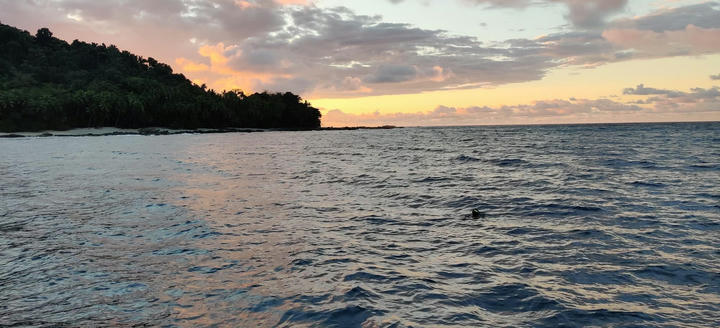
The moderate West wind (around 12 knots) and resulting chop were really uncomfortable with the bow pounding. After trying to get some sleep and failing, we lifted anchor slightly before midnight and decided to leave this island unsnorkeled while taking advantage of this Westerly wind coming from our back, a promise for beautiful downwind sailing without having to hand steer. We sailed all night main only with a speed of 4 knots or so under a full moon. It was pleasant. We rounded the South island of the Coiba archipelago, a national preserve where anchoring fees add up to $100 a night - not our scene. We both got three hours of sleep and at 7 in the morning, the wind died as forecasted. Yalçın turned on the engine and started hand-steering, we were 32 miles from our starting point and had 55 more to go to Bahia Arenas, a supposedly flat anchorage that would offer a great rest after our eventful night. After motoring for 2 hours, the wind picked up again and we sailed wing on wing for almost the rest of the way. The sky finally opened and the sailing conditions were beautiful, a welcome change after the past 6 months spent with almost no wind in the doldrums.
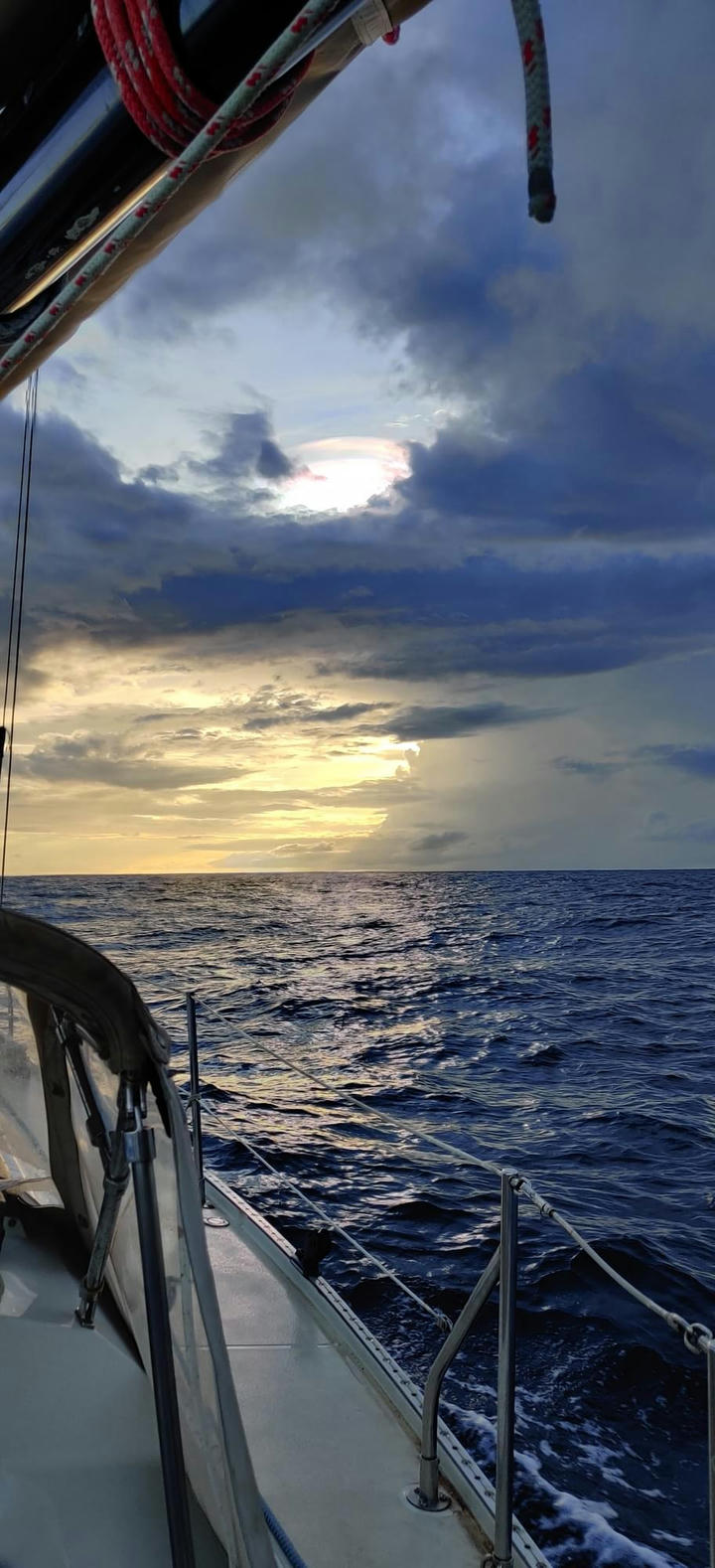
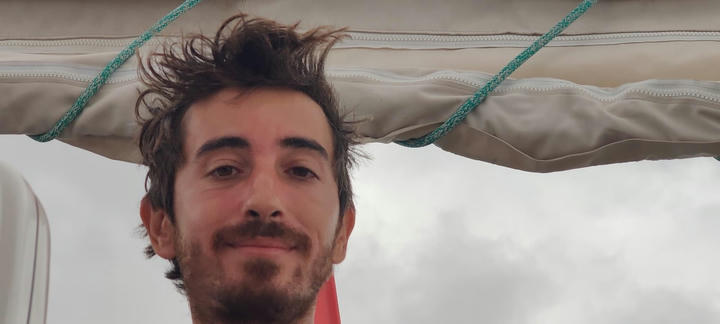
Racing the nightfall, we had in mind to motor the last 6-7 miles to arrive in Bahia Arenas with the last lights to have a good visibility on the offlying rocks to pass to get the nice protection which would grant us a good night sleep. In sight of the coast, we even got internet which allowed us to give news to our friends and family, announcing our imminent arrival to safety.
But once again, things didn't go according to plans.
Large gray clouds had developed over the land and a huge squall was guarding the entrance of the desired bay. The West wind picked up even more as we approached, prompting us to change course without even checking Bahia Arenas out. Its orientation didn't look good for these increasing Westerly winds and the squall was going to reduce the visibility which made the approach dangerous with the rocks. We decided to go North where we could find anchorage somewhere along the long island of Cebaco. Before we were able to pick a particular anchorage, the squall hit hard: Heavy rain, thunder and winds of 20 knots. Trying to make our way against the wind under engine power, the lack of electric autopilot basically locked me at the helm, attempting to hold our course in the darkness of the storm that obliterated all lights from the moon or the coast. We put Yalçın's phone, the Garmin satellite GPS transmitter and the hand held VHF radio inside the over as we do when lightning strikes close and we drove the boat North for almost two hours. We got wet and cold and switched our light rain protections to our heavy duty foulies and sailing boots. There was a lot of lightning activity, both long spiderweb-like strikes from in the clouds and bolts hitting the water on both our sides with a loud bang, and we were both quite scared. After a lull that picked up again, the squall - or likely series of squalls - eventually passed leaving us with a light rain and wind and choppy seas. Our progress North (12 miles or so) had lead us closer to Isla de Cebaco. From there, we decided to head for the almost 360 degree protected Bahia Naranja at the Western tip, effectively motoring back in the direction we had been coming from. It felt kind of a waste, especially as the veil from the squall was lifting revealing the lights of the coast, but making sure we could sleep at night without risking having to lift anchor again, took precedence. We motored for another 2.5 hours in the now windless night, watching the electric activity make its way South - we had contemplated going South for the next point and the next longer sail when Bahia Arenas had seemed blocked at first but had decided against it due to the color of the cloud over there too. After some welcome sandwiches with some of our last bread slices, taking to turn off the helm to eat, we made it inside the bay without any problem in a light rain. We saw a few mooring balls and dropped the anchor where we thought we were clear. There was a sportfishing boat on one of the moorings. The anchorage was rolling but after a warm meal of instant noodles, we fell asleep without problems. In the morning, we saw the sport fishing boat leave and a fisherman panga come in a few hours later. The bay was surrounded by the lush tropical landscape we were familiar with at this point. Some clouds looked like hanged on the top of the trees - the cloud forest - and the sky was still white-gray. We moved the boat to a more comfortable spot, closer to the fishermen in the South where the ocean swell entering the bay was reduced. We were quite close from the rocky shore but it turned out fine and a flatter boat seemed key to recover from this longer than expected sail. Time to leak our wounds...
